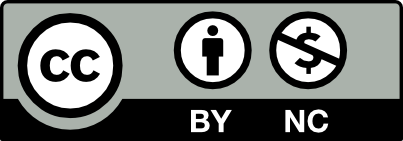Flat Plate based- Solar System with a tracking system
DOI:
https://doi.org/10.51646/jsesd.v7i1.36Keywords:
Solar water heating systems, Thermosyphone, Solar collector , Solar tracker , TRNSYSAbstract
Water heating in Libyan domestic sector represents over 29% of the total electrical consumption. Thre is a great potential of hot water usage in the industrial and other sectors. Solar energy can play vital role in providing hot water to the residential and industrial sectors. In this paper, numerical simulation and experimental investigation are undertaken to study the enhancement of thermosyphon solar water heater with flt plate collector system through design, manufacturing and implementation of a single axis tracking.
The collector tracks the sun in a band angle equal to 70° from east to west with surface tilted angle of 45° from the horizontal. Th design and manufacturing processes of the tracking system and assembling to the thermosyphon systems are presented. Numerical simulations are carried out using TRNSYS softare where several cases of one axis and two axis tracking systems are simulated and presented in this paper. TRNSYS simulation results indicate that 38% extra energy can be harnessed in case of single-axis tracking system over stationary one. Experimental testing of designed tracking system are performed along with stationary
identical system for several months, substantial amount of data are. Th results show that the performance is enhanced by an average value of 21.17% over stationary one. Ths result is considered to be very reasonable compared with the theoretical one. Th additional cost incurred due to the inclusion of the tracking system is estimated to be 20.4%
Downloads
Metrics
References
. Ibrahim S, 1998. Prospects of renewable energy in Libya. Renew Energy, 14, pp 135-141
. Bannani, F. K. Sharif, T. A. and Ben-Khalifa, A. O. R., 2006. Estimation of monthly average solar radiation
in Libya, Thoretical and Applied Climatology, 83, (1–4), pp 211–215.
. Renewable 21, Global Status Report, 2013. http://www.unep.org/pdf/GSR2013.pdf.
. Sadhishkumar S., Balusamy T., 2014. Performance improvement in solar water heating systems—A review, Renewable and Sustainable Energy Reviews, 37, pp 191-198.
. Chandresh Sharma, Rajendra Karwa, 2014. Experimental Study on an Enhanced Performance Solar Water Heater. International Journal of Computer Applications, pp 20-25.
. Sina Jahangiri Mamouri, André Bénard, 2018. New design approach and implementation of solar water heaters: A case study in Michigan, Solar Energy, 62 (1), pp 165-177.
. Rijo Cherianm Lasithan L G, 2016. Performance enhancement of solar water heater using compound
parabolic reflctor and numerical simulation of thermal losses, International Conference on Energy
Effient Technologies for Sustainability (ICEETS), 7-8 April 2016.
. Sheng Xue H., 2016. Experimental investigation of a domestic solar water heater with solar collector
coupled phase-change energy storage. Renewable Energy, 86, pp 257-261.
. Mohammad Ali Fazilati, Ali Akbar Alemrajabi, 2013. Phase change material for enhancing solar water heater, an experimental approach. Energy Conversion and Management, 71 (7), pp 138-145.
. Mustafa, Ismail.N.R., 2013. Collectors innovation to increase performance solar water heater. International Journal of Research in Engineering and Technology. 2, (9), pp 464-470.
. Herrero R. Martín, A. García Pinar, Pérez García J., 2011. Experimental heat transfer research in enhanced flt-plate solar collectors. World renewable energy congress, pp 3844-3850.
. Risztina Uzuneanu, Alexandrina Teodoru, Tanase Panait, 2011. Optimum tilt angle for solar collectors
with low concentration ratio, Advances in flid mechanics and heat & mass transfer, pp 123-128.
. Fanney A.H. and Klein S.A., 1998. Thermal performance comparison for solar hot water systems
subjected to various collector and heat exchanger flw rate. Solar Energy, 40,(1), pp 1-11.
. Michaelides I.M., , Kalogirou S.A., Chrysis I. , Roditis G., A. Hadjiyianni C, H.D. Kambezidis d , M.
Petrakis d , S. Lykoudis d , A.D. Adamopoulos, 1999. Comparison of performance and cost effctiveness
of solar water heaters at diffrent collector tracking modes in Cyprus and Greece. Energy Conversion &
Management 40, pp 1287-1303.
. Saed J.M., Abdunnabi M.J.R., Essnid A. A., Buishi A. M. A., 2017. New Designed Thrmosyphon Solar
Water Heater with Small Sized Parabolic Trough Collectors,JSESD,6 (2), pp 30-41.
. Chong, K. K., Wong, C. W., Tunku, U., & Rahman, A., 2010. General formula for one-axis sun-tracking system. INTECH Open Access Publisher.
. Alla Omar Abusalama, 2017, Enhancing Thrmosyphon Solar System Performance using simple and robust tracking system, M.Sc. thesis. Tripoli University.
. Klein, S.A., et al, 2010, TRNSYS 17: a transient simulation program, Solar Energy Laboratory: Madison University of Wisconsin, USA.
. Abdunnabi M.J.R, 2012. Optimum values of tank volume to collector area ratio of thermosyphon solar water heaters for Libyan families, JSESD, 1 (1), pp 25-31
Downloads
Published
How to Cite
Issue
Section
License
Copyright (c) 2021 Solar Energy and Sustainable Development Journal

This work is licensed under a Creative Commons Attribution-NonCommercial 4.0 International License.














